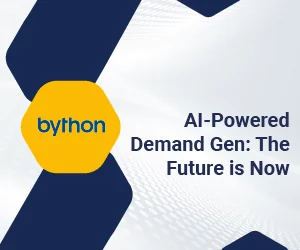The importance of effective employee onboarding cannot be overstated. The first 90 days of a new hire’s journey are critical, setting the stage for long-term success, engagement, and retention within the organization. As the workplace evolves, so must our approaches to welcoming and integrating new team members.
Traditional onboarding practices, once centered around paperwork and brief orientations, rapidly give way to more dynamic, personalized, and technology-driven experiences. This shift is not just a trend, but a necessity driven by the changing nature of work itself. With remote and hybrid work models becoming increasingly common, diverse workforces spanning multiple generations, and the ever-present demand for faster integration, companies must adapt their onboarding strategies to meet these new challenges head-on.
Defining Modern Approaches to Onboarding
The modern approach to onboarding is a far cry from the one-size-fits-all methods of the past. Today’s cutting-edge onboarding techniques emphasize personalization, leveraging technology to create immersive experiences, and providing continuous support beyond the first few weeks of employment. This evolution reflects a deeper understanding of the onboarding process not just as an administrative necessity but as a critical component of employee success and organizational culture.
At its core, modern onboarding is about creating a seamless transition for new hires, equipping them with the tools, knowledge, and connections they need to thrive in their roles from day one. It’s a holistic approach that addresses not only the practical aspects of the job but also the cultural and social elements crucial for long-term engagement and success.
Revolutionizing Company Culture
-
Drive Engagement with Great Onboarding Experiences for New Hires
The onboarding experience sets the tone for an employee’s tenure with a company. By crafting positive, engaging initial experiences, organizations can significantly boost new hire enthusiasm and commitment. Consider the approach of tech giant Google, which uses a “just-in-time” onboarding system. This method delivers information to new hires exactly when they need it, reducing overwhelm and increasing retention of crucial information. Another exemplary case is Zappos, known for its intensive month-long onboarding program that immerses new employees in the company’s unique culture and customer service philosophy.
To create an engaging onboarding experience, companies should focus on making new hires feel valued from day one. This could involve personalized welcome packages, interactive team-building activities, or even gamified learning experiences that engagingly introduce company processes and policies. The key is to move beyond passive information delivery to active participation and relationship building.
-
Communicating Company Values and Mission
Aligning new hires with the company’s values and mission early on is crucial for fostering a sense of purpose and belonging. Rather than simply presenting these as dry statements, innovative companies are finding creative ways to bring their values to life. Storytelling is a powerful tool in this context. For example, leaders can share personal anecdotes that illustrate how the company’s values have guided decision-making in critical moments. Multimedia presentations featuring employee testimonials or customer success stories can also effectively convey the real-world impact of the company’s mission.
Some organizations are taking this a step further by organizing “mission trips” or volunteer days as part of the onboarding process, allowing new hires to experience the company’s values in action. This hands-on approach not only reinforces the importance of these principles but also helps new employees form meaningful connections with their colleagues and the broader community.
-
Creating a Supportive Environment for New Hires
A supportive environment is crucial for helping new employees navigate their early days and weeks with confidence. Mentorship programs and buddy systems are proven strategies for providing this support. For instance, Microsoft’s “Onboarding Buddy” program pairs new hires with experienced employees, resulting in significantly higher productivity and satisfaction levels among participants.
Inclusive practices are equally important in creating a welcoming atmosphere. This might involve organizing diverse social events that cater to various interests and preferences, ensuring that all new hires feel included regardless of their background or personal tastes. Additionally, establishing clear channels for feedback and questions can help new employees feel heard and valued from the outset.
(Also Read: Tips for Onboarding Remote Employees)
Onboarding vs. New Employee Orientation
It’s crucial to understand that onboarding is not synonymous with orientation. While orientation is typically a one-time event focused on administrative tasks and basic introductions, onboarding is an ongoing process that extends well beyond the first few days or weeks. Effective onboarding programs can last anywhere from three months to a year, providing continuous support and development opportunities as new hires grow into their roles.
This extended approach allows for a more gradual, thorough integration into the company culture and job responsibilities. It might include regular check-ins, phased training modules, and opportunities for feedback and adjustment as the employee becomes more settled in their position. By viewing onboarding as a journey rather than a destination, companies can ensure that new hires receive the sustained support they need to succeed in the long term.
Revolutionizing Professional Development
-
Offering Training and Development Resources
In today’s rapidly evolving business landscape, continuous learning is not just beneficial—it’s essential. Forward-thinking companies are integrating robust training and development resources into their onboarding programs from day one. This might include access to online learning platforms like Coursera or LinkedIn Learning, allowing new hires to supplement their skills at their own pace. In-house workshops tailored to specific roles or departments can provide targeted skill development while also facilitating networking among new and existing employees.
Some companies are taking this a step further by creating personalized learning paths for each new hire based on their role, experience level, and career aspirations. This approach not only accelerates the learning curve but also demonstrates a commitment to the employee’s long-term growth, fostering loyalty and engagement from the start.
-
Forming Mentorships Between Senior Staff and New Hires
Mentorship programs are a powerful tool for knowledge transfer and cultural integration. When done right, they can significantly accelerate a new hire’s path to productivity while also boosting retention rates. The key to successful mentorship lies in thoughtful matching and clear expectations. Pairing new hires with mentors based on complementary skills, shared interests, or career paths can lead to more meaningful and productive relationships.
To establish effective mentor-mentee matches, consider using personality assessments or interest surveys to identify potential synergies. It’s also important to provide structure to the mentorship program, with suggested meeting frequencies, discussion topics, and goals. This ensures that both parties derive value from the relationship and that the program aligns with broader onboarding objectives.
Establishing Clear Objectives for Success in the Role
Setting clear, measurable goals for new hires is crucial for providing direction and a sense of purpose in the early days of employment. The best practice is to establish both short-term and long-term objectives that align with the employee’s role and the company’s broader goals. These should be SMART goals: Specific, Measurable, Achievable, Relevant, and Time-bound.
Regular progress reviews are essential to keep new hires on track and motivated. Consider implementing a 30-60-90 day plan, with specific milestones and check-ins at each stage. This structured approach allows for timely feedback and adjustment, ensuring that new employees stay aligned with expectations and receive the support they need to succeed.
Take Advantage of E-Forms, Time-Off Tracking, and Other Powerful Features to Help Drive Your Business
Leveraging digital tools for administrative tasks can significantly streamline the onboarding process, reducing paperwork and freeing up time for more valuable activities. Modern HR management systems offer a range of features that can enhance the onboarding experience, from electronic document signing to automated time-off tracking.
For example, cloud-based platforms like BambooHR or Workday allow new hires to complete necessary paperwork before their first day, making the initial onboarding session more focused on meaningful interactions rather than administrative tasks. These systems can also automate the assignment and tracking of onboarding tasks, ensuring that nothing falls through the cracks as new employees are integrated into the organization.
 Revolutionizing Job Satisfaction & Employee Retention
Revolutionizing Job Satisfaction & Employee Retention
-
Understanding Employees’ Needs, Wants, and Expectations
To create truly effective onboarding experiences, it’s crucial to understand what new hires are looking for in their roles and within the organization. Gathering these insights can be done through pre-onboarding surveys, one-on-one sessions with HR or team leaders, or even informal coffee chats during the first few weeks.
This information can then be used to tailor the onboarding experience, addressing specific concerns or interests that new hires may have. For instance, if a survey reveals that work-life balance is a top priority for incoming employees, the onboarding process could include a detailed overview of flexible work policies and wellness programs offered by the company.
-
Developing an Employee Value Proposition (EVP)
A compelling Employee Value Proposition is essential for attracting top talent and setting clear expectations for new hires. Your EVP should articulate what makes your organization unique as an employer and what employees can expect in return for their skills and efforts. This goes beyond compensation to include factors like career development opportunities, company culture, work environment, and social responsibility initiatives.
During onboarding, the EVP should be clearly communicated and reinforced through various touchpoints. This might involve showcasing employee success stories that exemplify the EVP in action or organizing activities that allow new hires to experience key aspects of the value proposition firsthand.
-
Fostering Great Management
Strong management practices are crucial for sustaining job satisfaction and reducing turnover. Managers play a pivotal role in the onboarding process, serving as the primary point of contact for new hires as they navigate their new roles. Regular check-ins, clear communication of expectations, and open feedback channels are essential components of effective management during onboarding.
Consider implementing a structured check-in schedule for new hires and their managers, with suggested topics and goals for each meeting. This ensures that important conversations happen consistently and that new employees feel supported and heard throughout their onboarding journey.
Integrating Technology in Onboarding
The role of technology in revolutionizing onboarding cannot be overstated. Advanced tools are enabling more personalized, efficient, and engaging onboarding experiences than ever before. AI-driven platforms can customize learning paths based on an employee’s role and prior experience, ensuring that each new hire receives the most relevant information and training.
Virtual reality (VR) is emerging as a powerful tool for immersive onboarding experiences, particularly for remote or distributed teams. Companies like Walmart are using VR to simulate customer interactions and store environments, allowing new hires to practice scenarios in a safe, controlled setting before facing real-world situations.
Comprehensive onboarding platforms like Enboarder or Talmundo offer end-to-end solutions that manage everything from pre-boarding communication to long-term development tracking. These platforms can significantly reduce administrative burden while providing a more cohesive and engaging experience for new hires.
Measuring Success and Continuous Improvement
To ensure the effectiveness of onboarding initiatives, it’s crucial to establish clear metrics for success and implement regular evaluation processes. Surveys at various points throughout the onboarding journey can provide valuable insights into employee satisfaction and engagement. Key performance indicators (KPIs) such as time-to-productivity, retention rates, and cultural alignment scores can offer quantitative measures of onboarding success.
Feedback loops should be established to continuously refine and improve the onboarding process. This might involve regular debriefs with new hires, managers, and HR teams to identify areas for improvement. By treating onboarding as an iterative process, organizations can stay responsive to changing needs and ensure that their programs remain effective over time.
The Role of Diversity and Inclusion in Onboarding
In today’s diverse workforce, it’s essential that onboarding practices are inclusive and welcoming to all. This goes beyond mere compliance to actively celebrating and leveraging the diverse perspectives and experiences that new hires bring to the organization.
Inclusive onboarding might involve offering materials in multiple languages, providing cultural awareness training for all employees, or highlighting employee resource groups during the onboarding process. Companies like Accenture have implemented “inclusion workshops” as part of their onboarding, helping new hires understand and appreciate the value of diversity in the workplace.
Final Thoughts
Revolutionizing the onboarding process is no longer a luxury—it’s a necessity for organizations looking to thrive in today’s competitive business landscape. By embracing cutting-edge techniques that prioritize personalization, leveraging technology, fostering a supportive culture, and emphasizing continuous development, companies can set their new hires up for long-term success.
The first 90 days represent a critical window of opportunity to engage, align, and empower new employees. By investing in innovative onboarding practices, organizations can not only improve retention and productivity but also build a strong foundation for a dynamic, engaged workforce ready to drive the business forward.
As we look to the future, the most successful organizations will be those that view onboarding not as a finite process, but as the beginning of an ongoing journey of growth and development for their employees. By continually refining and adapting their approaches, these companies will create resilient, adaptable workforces capable of meeting the challenges of an ever-evolving business world.








